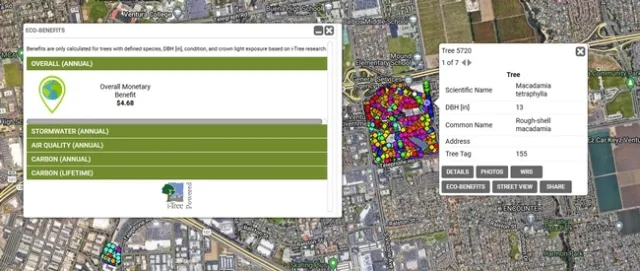Tree Canopy Lowers Heat Island Effects
As the impacts of climate change increasingly affect our way of life, numerous cities are addressing a key issue with a simple yet effective solution: the expansion of urban tree coverage. The term 'heat island effect' is a prevalent reality in densely populated urban areas lacking tree canopy cover, where the built environment primarily consists of concrete pavement and hardened buildings, which absorb and retain heat. Heat islands not only raise temperatures but also contribute to various illnesses and, in extreme cases, resident mortality. Low-income and disadvantaged neighborhoods are often the most affected by these increased temperatures.
Research shared by the U.S. Environmental Protection Agency, (EPA) shows urban forests have temperatures that are on average 2.9°F lower than unforested urban areas.1 Moreover, Heat.gov cites regions in the U.S. where mid-afternoon temperatures are 15°F to 20°F warmer than surrounding vegetated areas2. This link will show Los Angeles heat islands over time, comparing night time to day time temperatures.
Fortunately, there are multiple solutions to tackle heat island effects. Planting more trees, especially those adapted to drought conditions and extreme temperatures, installing 'green roofs,' opting for 'cool pavement' alternatives, and embracing other 'smart growth' initiatives can help communities create livable, healthy, and vibrant neighborhoods that benefit all residents.

The "Climate Ready Trees," project involves evaluation of 400 tree species at various trial locations in California. Trees were selected for their drought tolerance, low maintenance, and the benefits of tree canopy for urban landscapes. Locally, the Ventura County Tree Coalition uses a program called, Tree Plotter. It is only in the pilot stages and tracks annual tree planting targets by local agencies across the county. The plotter can show cost benefits by species for carbon sequestration, stormwater and air quality benefits.
Communities that come together to address these often overwhelming and complex environmental and socioeconomic feel empowered and find hope that adaptation is possible.
1. Knight, T., S. Price, D. Bowler, et al. 2021. How effective is ‘greening' of urban areas in reducing human exposure to ground-level ozone concentrations, UV exposure and the ‘urban heat island effect'? An updated systematic review. Environmental Evidence 10, 12.
2. National Integrated Heat Health Information System (n.d.). About Urban Heat Islands. Heat.gov. Retrieved January 25, 2024, from https://www.heat.gov/pages/urban-heat-islands
